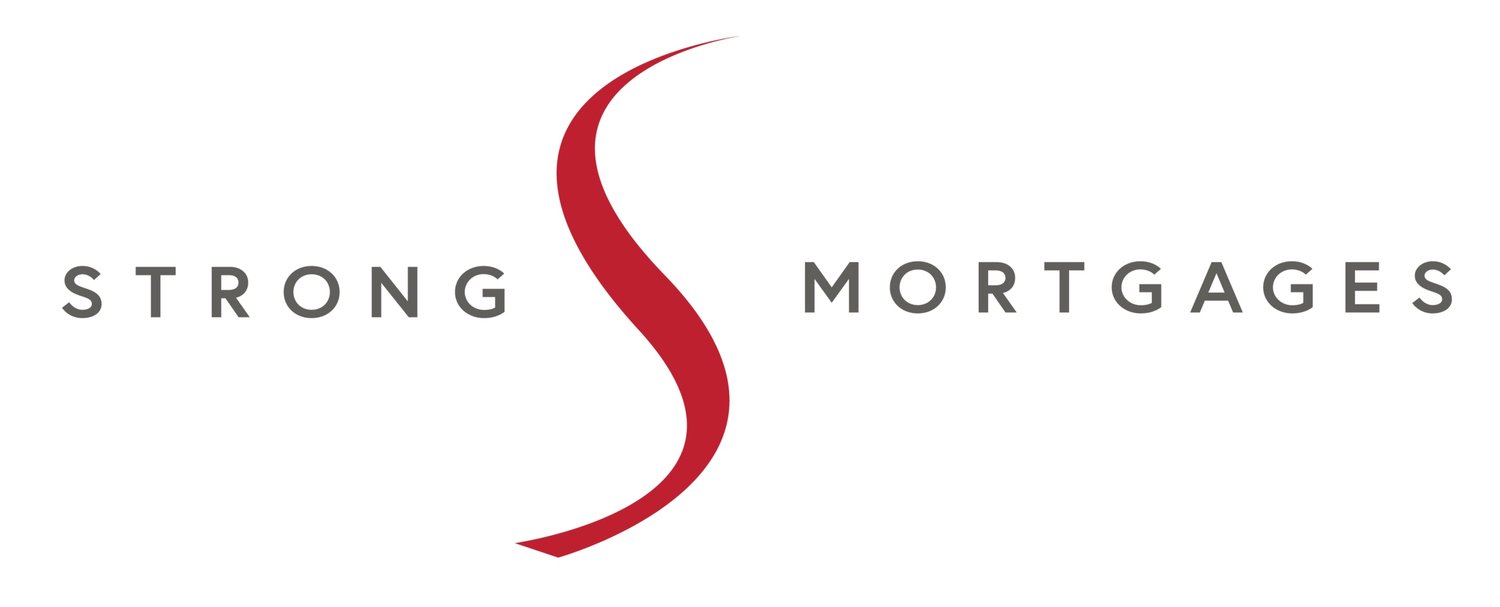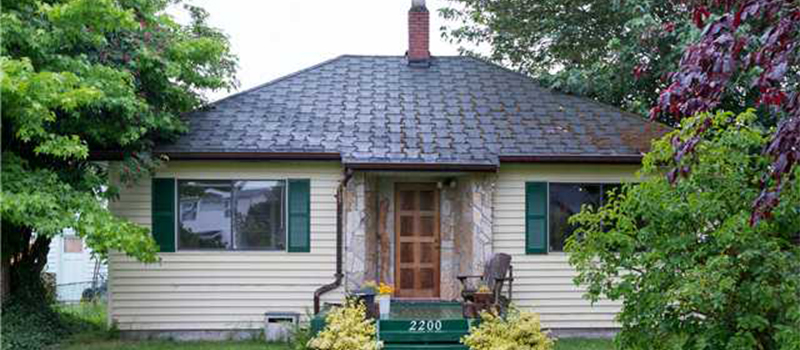

June has brought shocking change in many ways to Canadians.
First, to my neighbours, friends, and family in Southern Alberta, I have been thinking of you and wishing a quick and strong recovery. Those who were affected by the floods and others who supported the clean up efforts, evacuees, or funding the flood relief, this devastation has brought challenges that have felt insurmountable. As Albertans, you have proven your incredible sense of Western charm. Although the timing had every possibility to negatively effect the annual tradition and spirit of Stampede, the community rallied together to make a statement that “Come Hell or High Water,” we’re survivors.
As for the real estate market, changes have shifted from an overall declining market to a buoyant one with increasing sales, prices, construction and permits across the country. Calgary still remains the strongest market breaking records in the number of luxury homes sales and home prices.
Bond yields have risen quickly resulting in compounding mortgage rate increases. Five-year rates that were once hovering around 2.89% have since increased to 3.39% or higher within a short couple of weeks.
The Organization for Economic Co-operation and Development (OECD) latest global economic outlook estimates that Canada’s housing market is overvalued by 64 per cent when compared to rental rates, and by 30 per cent when compared to incomes. While our top Canadian economist can’t even predict the value of municipal permits within a reasonable margin, May permits increased by 10.5% when it economists expected to see a decline of 3%. This tells me we may be in for a bit more of a ride before we see some stability set in.
More highlights from June’s headlines:
Overall Market
- StatsCan which showed Canadian municipalities issued $7-billion in permits in April, up 10.5% from March. It was the fourth straight month that the figure has risen.
- 43,000 jobs created in the construction sector in May – Statistics Canada figures
- Canada and Australia at mid-point between countries such as Colombia, the United States and Chile where prices have been rising and places such as Spain, Italy and Ireland where prices have fallen, Scotia reported.
- Canada’s housing market is showing signs of a soft landing amid evidence of robust demand and buoyant new construction plans.
- The impact of Flaherty’s policy changes are beginning to fade, Toronto Real Estate Board President Ann Hannah said “A growing number of households who put their decision to purchase on hold as a result of stricter lending guidelines are starting to become active again in the ownership market.”
- The value of municipal permits rose 10.5% to $6.96 billion, following a revised 6% rise in March, Statistics Canada. The gain was the fourth in a row, the longest streak of increases in a decade. Economist had expected and overall 3% decline.
- Residential permits rose 21% to $4.35 billion in April. Permits for housing projects such as apartments and condominiums jumped 51.9% to $2.15 billion, and single-family permits rose 1.1% to $2.21 billion. The value of permits was 5.4% higher in April than the same month a year earlier, with multiple-unit housing 40.4% higher on the year. Statistics Canada.
- Of 34 country ranked and rated by the Organization for Economic Co-operation and Development, which focused this report on economic powerhouses, Canada came in just after Belgium and Norway as a country marred by home prices out of whack with both average salaries and rental prices. The OECD’s latest global economic outlook estimates that Canada’s housing market is overvalued by 64 per cent when compared to rental rates, and by 30 per cent when compared to incomes.
- The index, which measures price changes for repeat sales of single-family homes, showed overall prices rose 1.1% in May, the ninth time in 15 years that May prices were up 1.0% or more from April.
- Canada Mortgage and Housing Corp. saying new home construction or starts reached the lofty 200,000 level in May on a seasonally adjusted annualized basis.
- Bond yields began rising in early May when U.S. jobs numbers came in much better than expected, and then they shot up this week after U.S. Federal Reserve chairman Ben Bernanke suggested the central bank could start tapering its asset-buying program, under which the central bank now scoops up $85-billion (U.S.) of bonds and securities each month to keep their yields low.
- Royal Bank of Canada, the country’s biggest mortgage lender, has boosted its five-year rates for fixed-rate mortgages twice in the last two weeks to 3.49 per cent, and has also raised rates on mortgages of other lengths. Rival banks are following suit
- Scotiabank and the Royal Bank of Canada announce a round of increases covering various terms of what they call special discounted rates. Increases came a day after TD Canada Trust, the retail arm of TD Bank, boosted its “special” five-year closed rate a tenth of a percentage point to 3.39%. The rate is a discount off the posted rate.
- The May national average price, for all types of property in major markets across Canada, was $388,910 — up 3.7% from a year earlier. Almost all of the local markets that make up the average saw year-to-year increases.
- Zoocasa says 47% of Torontonians describe either themselves or a friend or family member as real estate obsessed. At least in the rest of the country it’s only 34%.
- The number of Canadian homes sold so far this year is slightly higher than projected and it looks as if 2014 will show a rebound, according to a new forecast by the Canadian real estate industry’s main association.
- Millions of Canadians living in many parts of the country could find their homes declared uninsurable, as the insurance industry grapples with skyrocketing water damage claims.
- Construction intentions for condos, a segment believed most primed for a downward spiral, rose 51.9 per cent in April, with most of that coming in Ontario, British Columbia and Quebec. Permits for single-families dwellings inched up just 1.1 per cent. All the gains in building intentions was on the residential side, which rose 21 per cent to $4.4 billion Non-residential permits fell 3.6 per cent to $2.6 billion. The total $7 billion value of permit for April remains below the peaks reached in 2012.
- It’s been an unusual and unpredictable spring market. Transactions are off 2.6 per cent year over year, but the average price of a Canadian home was $388,910 in May, up from $375,062 a year earlier. The month-over-month increase in home sales was the biggest gain seen in more than two years, according to CREA.
Predictions
- The base case scenario is a soft landing,” said David Tulk, chief macro strategist at Toronto-Dominion Bank’s TD Securities in Toronto. “You’d have to see rates move dramatically higher” for a major correction.
- David Madani, Canada economist for Capital Economics, is sticking with his call for up to a 25% decline in home values — a call he first made about two years ago.
- CIBC deputy chief economist Benjamin Tal says he is not convinced Canada’s housing market is preparing for a jump forward, saying that the trend remains toward a pullback. “There’s a big difference between permits and the willingness to break ground if they are having difficult selling, especially in the high-rise market,” he said. However, should future months also point to strong growth in intentions, “we will need to re-think the situation because then we have a market that is doing something it should not be doing.
- The central bank forecast that the debt to disposable income ratio will stabilize this year. Other signs of “constructive evolution” of household imbalances include slowing housing starts and resales since mid-2012, according to the report.
- Toronto: If that unsold inventory isn’t absorbed as projects come on stream over the next year to 30 months, prices could plunge and spread to the rest of the housing market, the central bank warns. “Such a correction would reduce household net worth, confidence and consumption spending, with negative spillovers to income and employment.”
- The Bank of Canada’s key interest rate isn’t expected to jump higher than its 1-per-cent level for some time, but government bond yields are at the whim of the market, and these yields are the benchmarks from which so many other products are priced.
- “Sorry to inform you, but “The Great Real Estate Crash of 2011…no…2012…no…2013” has been postponed until 2014, or until further notice. More seriously, we believe housing remains on track for a fabled soft landing.” said BMO Capital Markets chief economist Douglas Porter.
- CREA is now estimating 443,400 units will be sold in 2013, a decline of 2.5% from 454,573 in 2012. It had previously projected a decline of 2.9% from 2012.
- While CREA still anticipates sales to fall 2.5% in total during 2013 compared to 2012 — to 443,400 units from 454,573 — home buying should rebound to 464,300 units in 2014, a jump of 4.7%.
- In Alberta, sales are expected to rise by 4.2 per cent this year (62,900 units), which will be the best provincial growth in the nation, and then increase by 3.5 per cent (65,100) in 2014.
- The Conference Board of Canada says Paul Krugman and other economists are wrong when they say Canada is in for a debt and housing market bloodbath.
- The economic research group expects house prices to remain high and to continue growing faster than incomes, and it says one of the reasons behind that is Canada’s large immigrant population.
- The bottom line: Most parts of Canada will see, very soon, a modest upward trend in housing prices, and those that don’t are unlikely to see anything worse than a small decline. Meanwhile, Vancouver is high on his list of the least likely places to see any problem at all.
Vancouver
- Home sales rose 1% in May from a year ago, with composite prices down 4.3%, Vancouver’s real estate board.
- Vancouver made one of the largest contributions to the national increase among 34 cities, Statistics Canada said, with permits rising 50.7% to $645 million led by multi-family dwellings. Calgary permits also rose 40.6% to $773 million on commercial buildings.
- The Real Estate Board of Greater Vancouver said they were 2,882 sales in May, a 1% increase from a year ago and a 9.7% jump from April. But sales are still 19.4% below the 10-year average for the month.
- “We’ve seen some steadying trends over the last three months,” said Sandra Wyant, REBGV president, in a release. “The number of homes listed for sale has been keeping pace with the number of property sales, leading to a balanced sales-to-listings ratio. This is having a stabilizing influence on home price activity.”
- New listings also continue to drop with May numbers 7.4% below the 10-year average. New listings for detached, attached and apartment properties in Greater Vancouver were 5,656 in May, an 18.3% decline from a year ago and 3.7% drop from April.
- Total listings in the Greater Vancouver area were 17,222, a 3.4% drop from a year ago. Listings were up 2.9% from April 2013.
- Prices continue to drop in the market. The MLS® Home Price Index composite benchmark price for all residential properties in Greater Vancouver was $598,400, a 4.3% decline from a year. Prices remain up 1.8% from January 2013.
- The board says sales on the Multiple Listing Service in the Vancouver region totaled 2,882, up from 2,853 a year ago and 2,627 sales in April this year.
- Total housing starts in B.C.’s urban markets fell for a second consecutive month to a seasonally-adjusted annualized rate of 21,300 units, down 7.4 per cent from April and marking a reversion to weaker levels seen from November through February.
- The retreat was led by an 18-per-cent pull-back in Metro Vancouver, while starts in the rest of the province rose for a second straight month. Provincial multi-family starts were down nearly 13 per cent from April, which was offset slightly by a 7.5-per-cent gain in single-family activity.
- B.C. recreational property prices held steady or rose slightly in most provincial markets the past year — with falling values in Tofino, Salt Spring Island and Harrison Lake the exception, according to a Re/Max report. Re/Max representative Elton Ash said the market for B.C. recreational properties is slowly improving but property values in many markets remain below the peaks set in recent years. The report said the starting price for a south Okanagan property rose from $610,000 to $649,000 in the past year but remains well below the $800,000 starting price that existed in 2011.
- “Price depreciation has brought B.C. rec properties back into range for more people, especially Canadians,” he said. “Canadians were buying heavily in the U.S. market but a lot of those bargains are gone. Arizona prices have risen by 20 per cent.”
- The report said the starting price of a Whistler property held steady in the past year at $700,000, but remains 12-per-cent below the $799,000 price achieved in 2010.
- The Metro Vancouver market switched from a buyers’ market to a balanced market in March, when the sales-to-listings ratio rose from 14 per cent to 15 per cent, where it still stands, said Real Estate Board of Greater Vancouver president-elect Ray Harris.
Calgary
- Last month had the highest level ever for luxury home sales of properties more than $1 million, according to Mike Fotiou, associate broker with First Place Realty in Calgary. There were 84 luxury home sales in May, besting the record for any month, which were previously 80 in May 2012.
- Kaitlyn Gottlieb, a realtor with Century 21 Bamber Realty in Calgary, said the upper-end market is seeing an increased demand for inner-city luxury homes with areas such as Hillhurst, Crescent Heights, Capitol Hill, Altadore and Parkdale some of the most coveted for homebuyers who are seeking the level of craftsmanship and detail you traditionally find in estate-style homes. It’s a development trend that shows no signs of slowing down.
- The average sale price of a single-family home in May reached a record of $521,887, eclipsing the previous mark of $518,604 which was set in March of this. Average sale prices during the month were up 4.03 per cent from a year ago. The median price was also a record at $454,400, up 4.24 per cent from last year. The previous median price record was $450,000 in March of this year. The benchmark price in May, looking at typical properties sold, was up 6.88 per cent to $456,900.
- Record prices were also set in May for total MLS residential sales in the city with the average price at $462,076, up 3.83 per cent from last year, and the median price at $406,500, up 4.23 per cent from May 2012.
- Previous record prices for total MLS residential sales were set in March of this year at $460,903 for the average and $403,000 for the median. The benchmark price in May was up 6.89 per cent to $409,600.
- In May, total MLS sales in the city of 2,544 were up 6.85 per cent from last year while single-family sales of 1,766 increased by 3.46 per cent.
- The price of new homes rose 0.2% in April from March, more than the expected 0.1%, with the oil town of Calgary the top contributor, according to Statistics Canada data.
- For the third straight month, Calgary was the top contributor in April to the national advance for new home prices.
- Canada Mortgage and Housing Corp. reported that total starts in the Calgary census metropolitan area reached 1,078 units during the month, which was an increase from 949 in May 2012.
- Builders started construction on 41,438 new homes in Alberta in May — the highest this year and the first time since early 2008 that the figure has risen above the 40,000 mark.
- What’s more, the trend over the last several months clearly suggests that the housing market is heating up,” said Todd Hirsch, chief economist at ATB Financial, “Between May 2012 and May of this year, housing starts are 14.1 per cent higher than they were in the previous 12-month period. “What’s causing this boom in home construction isn’t any big mystery: population growth. Even if overall economic growth has slowed somewhat, the inflow of people into our province hasn’t.”
- The latest Labour Force Survey, released last week, points to a surge in the labour force, which has grown by 59,400, or 2.6 per cent, over the last 12-months.
- Interprovincial and international migration to Alberta is driving some of the demand for new homes. High wages, low unemployment and a younger population are also contributing factors,” said Hirsch
- Calgary MLS sales also increased by 8.9 per cent in May from a year ago to 3,247 transactions while the market overall in Canada saw a decrease in sales activity of 2.6 per cent year-over-year to 51,764.
- “The real estate market in Calgary is supported by three important factors, any of which would support a robust market independently and yet we enjoy all three,” said Cody Battershill, a realtor with RE/MAX House of Real Estate in Calgary. “The underlying variable that ties all three together is the desirability and quality of living we enjoy in Calgary.”
- In May, Calgary saw average MLS sales price growth of 2.6 per cent from last year to $440,675 while in Canada average sale prices rose by 3.7 per cent to $388,910.
- In Alberta, sales rose by 3.2 per cent year-over-year to 7,209 units and average sale prices jumped by 2.9 per cent to $385,702.
- Three factors for Calgary’s strong market:
- The first factor is strong migration to Calgary and Alberta.
- The second is Calgary’s demographics. Canada’s youngest major city with the average Calgarian being in their mid to late 30’s. This is important as first-time buyers kick start the property ladder and enable existing homeowners to sell and move up.
- The third factor is that Calgary is a head office leader and business hub that is recognized internationally for our experience, technical prowess and leadership. Calgary has more head offices per capita than anywhere else in Canada and is the world’s 17th most competitive financial centre.
Toronto
- Scotiabank’s quarterly study on global real-estate trends says Toronto’s housing market is seeing slower sales and construction. Scotiabank says housing starts in the Toronto area totaled just 28,900 units in the first four months of 2013, down about 40% from last year.
- “There are 19 million square feet of office under construction. There are 20 plus office buildings going up as we speak,” said Ross Moore, director of research for Canada for CB Richard Ellis. “In downtown Toronto, we’ve never seen so much under construction, including the 1970s and 1980s.”
- Home prices in Toronto rose 5.4% in May from a year ago, the biggest increase in five months, suggesting demand in the country’s largest housing market remains robust, the Toronto Real Estate Board reported.
- The average sale price rose to $542,174, from $514,567 a year ago, while a composite home benchmark price index for the city was up 2.8%, the Toronto Real Estate Board reported. Unit sales dropped 3.4% from a year earlier to 10,182, the board said. On a year-to-date basis, Toronto sales are down 9.6%.
- Statistics Canada said the value of April municipal building permits posted a 10.5% gain.
- Even condos saw price gains of 1.2 per cent in the City of Toronto — and just under one per cent in the 905 region. The number of condos sold in the GTA fell 9.3 per cent last month compared to May 2012, but for the first time in months, that figure wasn’t in the double digits.
- The average price of a condo in the City of Toronto rose to $372,768 in May and $293,398 in the 905 region, according to TREB
- The average days on market was up slightly year over year, to 23 days last month compared to 21 days a year ago.
- The average price of detached homes averaged $676,797 in May, up 5.5 per cent in the 416 region to $864,536 and $602,576 in the 905 region, according to TREB.
- Semi-detached homes were up 4.1 per cent to an average $496,120 across the GTA with the biggest growth in the 416 region where average prices were up almost 8 per cent to $633,625 compared to $409,632, a 2.3 per increase, in the 905 regions.
- Townhouse sales saw the biggest decline in sales next to condos, with transactions down 7.3 per cent across the GTA. Average prices, however, came in just under $400,000. The average townhome sold for $463,772 in the 416 region, up .2 per cent year over year, while prices in the 905 region hit $375,576, up 4.4 per cent over last May.
- The growing list of fees being slapped on new home buyers now adds up to an average of $118,400, or 23 per cent, of the price of a new, single-detached home in the GTA, and more than $64,000, or 20 per cent, of the cost of a new high-rise condo, said the Building Industry and Land Development Association in a report. If city council goes ahead with a proposal to double development charges, those extra costs — some $7,671 on the average one-bedroom unit and $10,624 on the average two-bedroom — are likely to land right in the laps of unsuspecting buyers.



 Burkeville
Burkeville
 Across the nation “affordability” is still challenging buyers, especially in the detached bungalow market. Vancouver leads the pack with 82.3% of typical household income going to housing costs. Toronto is estimated at 53.8% while Calgary is seen as one of the most affordable cities in the county.
Across the nation “affordability” is still challenging buyers, especially in the detached bungalow market. Vancouver leads the pack with 82.3% of typical household income going to housing costs. Toronto is estimated at 53.8% while Calgary is seen as one of the most affordable cities in the county.

